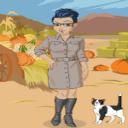Yahoo Answers is shutting down on May 4th, 2021 (Eastern Time) and beginning April 20th, 2021 (Eastern Time) the Yahoo Answers website will be in read-only mode. There will be no changes to other Yahoo properties or services, or your Yahoo account. You can find more information about the Yahoo Answers shutdown and how to download your data on this help page.
Trending News
How many layers of clothes would a lady in the 1830s have worn?
I was hoping maybe someone could describe to me what sort of order all those underthings (chemise, corset, petticoats...) might have gone in. I think that stylish ladies wore more petticoats, but if you were working class, how many would be normal?
1 Answer
- ChrispyLv 71 decade agoFavorite Answer
I'll take a stab at it for you.
I think that the garments worn next to the skin were the drawers (which, I think, were called 'pantalettes'); they were fastened about the waist with tapes or drawstrings, and came down to at least the knee and frequently the ankle, where they were again fastened with tapes or drawstrings. The stockings were held up by tying them with garters. usually just under the knees.
The chemise was a loose, sleeveless garment that went over the upper body, and may have been tucked into the drawers.
Then came the corset or 'stays,' often made of whalebone, which was a bit more flexible than the metal stays known to previous generations. Neither material, though, was particularly comfortable. The corset was fastened in the back with drawstrings, and it required the help of another person to do this. Therefore, women of the working and lower classes, who could not afford a lady's maid to help them dress, often went without corsets.
Then there was the corset cover; a garment similar to the chemise, which, I think, may have hung loose rather than being tucked into the pantalettes.
Next came a petticoat. In the 1830's, the crinoline of the late 1850's and the 1860's had not yet come into vogue, so these were rather like underskirts, again fastened at the waist with drawstrings or tapes.
After all this, the dress was put on.
Makes you appreciate the relative simplicity of modern clothing, doesn't it? :-)
Source(s): history nut with an interest in such mundane matters as how people dressed in times past



